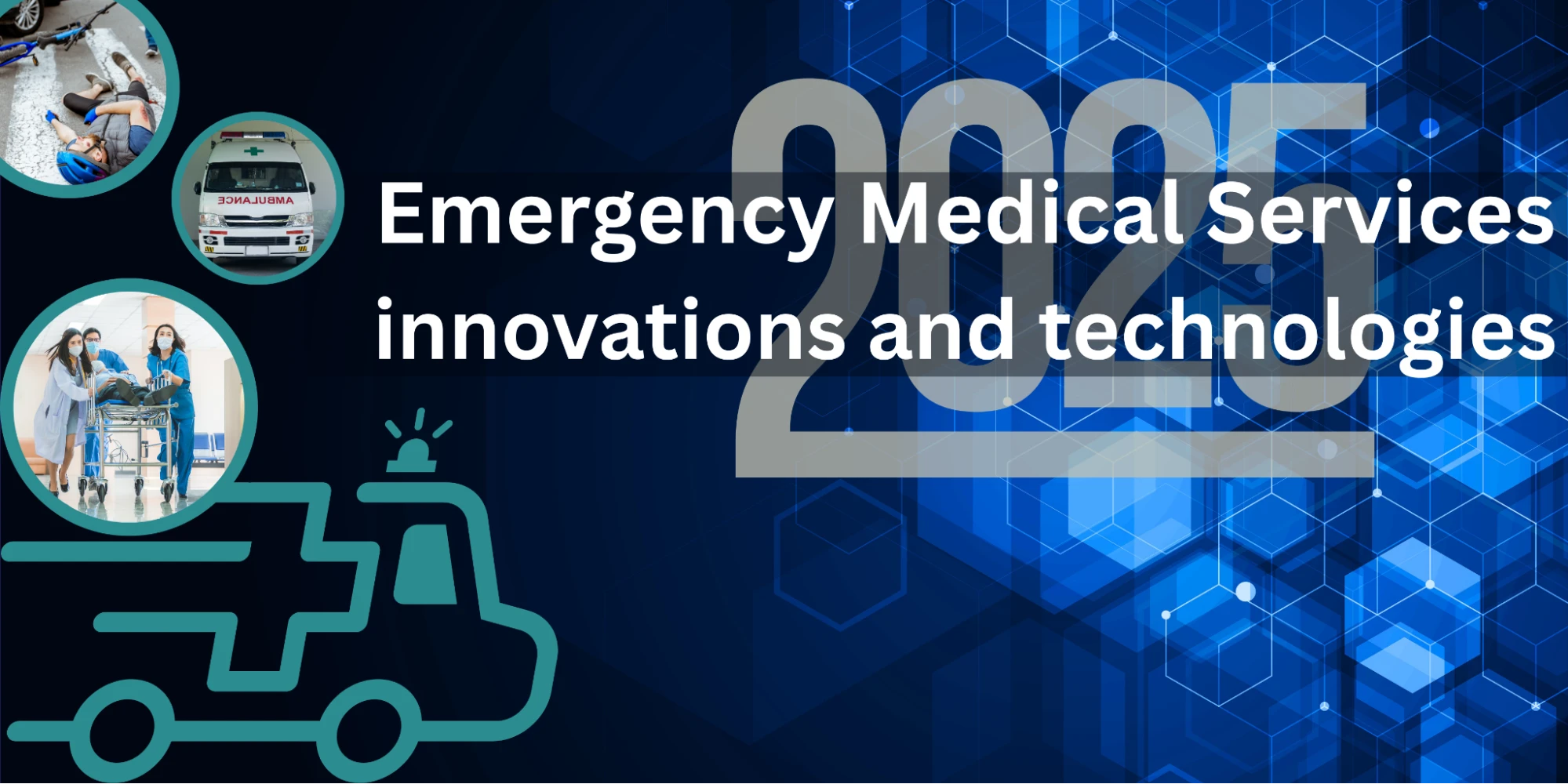Advancements in Emergency Medical Services: What’s New in 2025
Emergency Services (EMS) have always made sure to prioritize speed, accuracy, and efficiency while also showcasing exceptional professionalism during emergencies. In 2025, the world is witnessing technological transformations alongside policy changes, both of which are making a colossal impact in the field. The ever-changing healthcare industry requires higher levels of intelligence and negotiations in emergency-response systems. Luckily, this year has brought an abundance of new technologies that are changing all aspects of EMS operations, from receiving a call to managing post-incident care.
1. AI-Powered Triage and Dispatch Systems
Artificial Intelligence, in recent years, has dramatically enhanced Emergency Medical Services (EMS) operations. Current-day dispatch centers employ AI technologies in the analysis of emergency calls performed remotely and in real-time to enhance speed and accuracy in triage.
Natural language processing plays an important role in symptom and urgency detection, while predictive analytics helps devise response and routing plans.
Key Benefits:
- Reduced response times by up to 30%
- Improved prioritization of critical cases
- Enhanced data collection for ongoing system improvement
Case Highlight:
An AI dispatching system in New York City has been hailed for improving patient outcomes by almost 35% in high-priority cases due to its reduced response time.
2. Drone-Assisted Emergency Medical Services
Drones are not a futuristic idea; rather, they are currently being used to save lives. In 2025, drones will be extensively used to deliver defibrillators, medications, and even blood to remote or busy areas before the arrival of EMS.
Examples:
- Sweden and South Korea are deploying drones for cardiac arrest support
- U.S. pilot programs show a 70% improvement in delivery time to rural areas
Additional Insight:
A partnership between the Red Cross and drone manufacturers in Kenya is now delivering anti-venom and trauma supplies to regions previously cut off from fast aid.
3. Smart Ambulances with Real-Time Diagnostics
Ambulances in the modern world function as mobile patient clinics. Telemedicine services are already integrated into smart ambulances, with Internet of Things (IoT) devices for remote diagnostics and communications with hospitals. These capabilities enable EMTs to start providing treatment while driving to the hospital. Additional guidance is provided by physicians over the phone.
Features Include:
- Continuous patient monitoring and vital stats tracking
- Onboard ultrasound and lab testing tools
- Secure data transmission to ER teams
Impact Study :
A 2025 report from EMS World shows that smart ambulances have improved cardiac survival rates by 18% in cities where they’re fully implemented.
4. Mobile Apps Empowering Bystanders and EMTs
Applications are empowering not only civilians but also professionals. Ordinary citizens can make use of mobile applications in their daily tasks for reporting emergencies as well as for finding AEDs and obtaining CPR instructions.
Meanwhile, EMTs access electronic patient records and coordinate care in real time.
Notable Apps:
- GoodSAM: Connects trained volunteers to nearby emergencies
- PulsePoint: Alerts CPR-trained users to nearby cardiac arrest victims
- RapidResponse: An emerging app that combines location data, patient history, and live chat with dispatch centers
5. Wearable Health Tech Integration
Wearables like smartwatches and biosensors now feed live health data into EMS systems. This helps responders prepare in advance and even predict medical emergencies before they occur.
Use Cases:
- Early detection of cardiac events
- Real-time glucose monitoring for diabetics
- Integration with emergency alert systems for the elderly
Case Example:
In Tokyo, integration between EMS systems and wearable tech has enabled pre-alerts for over 5,000 emergency calls annually, leading to faster intervention.
6. Virtual Reality (VR) for EMT Training
Training for EMS professionals has gone high-tech. Virtual reality platforms allow EMTs to simulate high-stress scenarios and improve their skills without risk. In 2025, VR is part of standard EMS training programs worldwide.
Advantages:
- Safe, immersive environments for skill-building
- Scalable training modules for diverse emergencies
- Increased retention and confidence among trainees
Expert Insight:
According to the Journal of Emergency Medical Services, VR-trained EMTs perform 22% better on real-world evaluations than those using traditional methods.
7. Regulatory Advances and Global Coordination
Innovation requires updated frameworks. In 2025, governments and international bodies introduced new standards for EMS tech interoperability, data privacy, and cross-border coordination.
Key Developments
- WHO’s global EMS guidelines
- Interoperability mandates across the EU and North America
- Funding initiatives for rural and underserved areas
Policy Focus
New legislation in Canada and the EU is aimed at unifying EMS data protocols, improving coordination in multinational emergencies and disaster response scenarios.
Impact: Saving Lives and Enhancing Efficiency
These innovations aren’t just impressive; they’re life-saving. Early data shows:
- 25% decrease in average EMS response times in urban areas
- 40% improvement in patient outcomes for cardiac arrests
- Greater equity in emergency care access
Conclusion: The Future Is Now
The advancements in Emergency Medical Services in 2025 mark a new chapter in global healthcare. EMS is faster, smarter, and more connected than ever, from AI to drones and VR training. As innovation continues, so will the improvements in how we save lives.
Stay informed. Stay ready. Because in emergency care, every second counts.







